#BUT where is the Q&A from the Viennale?!
Link
Translated interview
A new politics of love - An interview with Adèle Haenel on 'Portrait of a Lady on Fire'
By Barbara Fohringer, in: The Gap, 28th of October 2019
Additions or clarifications for translating purposes are denoted as [T: …]
The film 'Portrait of a Lady on Fire' not only shows a same-sex love but also an equal one between two women in the 18th century. The Gap met with Adèle Haenel, one of the two leading actresses, for a conversation.
Marianne (Noémie Merlant), a painter in the 18th century, is commisioned to do a portrait of the aristocratic Héloïse (Adèle Haenel) - without her knowledge -, as Héloïse already refused to sit for another painter. Héloïse, whose sister has recently died, is promised to a nobleman in Milan, her portrait is meant to illustrate her future marriage. In Céline Sciamma's ('Water Lilies', 'Tomboy', 'Girlhood') new film, it is two women who fall in love with each other, two women who are equals.
'Portrait of a Lady on Fire' received the Best Screenplay award and 'Queer Palm' at the Cannes Film Festival this year. The film opened the Viennale a couple of days ago. Adèle Haenel ('Water Lilies', 'The Bloom of Yesterday', '120 BPM') came to Vienna for this event - and answered some of our questions.
Interviewer: Why did you choose this role? Why did it appeal to you?
Adèle Haenel: I've known Céline Sciamma, the director, for a long time. We met twelve years ago and did our first film together, and I think, she is currently one of the most talented directors in France. [T: 🥰] I then read the screenplay, and thought it is a wonderful love story. When I finished reading it, I cried.
I: How did you approach the role? How did prepare for it? It is after all a period film, which takes place at the end of the 18th century.
AH: I never think like that. The fact that it is a period film doesn't influence the way I'm acting. It would be the wrong approach, to think about acting in that way. It doesn't matter in which period the story takes place, but it's about the problem that this film deals with. You cannot say: This is the way to prepare for a period drama. I was interested in the key question of the film and that it's centred around queer people. We wanted to tell a new love story, because it's about the love between two people that are equals. It's two women of roughly the same age. They are of similar height and intelligence. None of them dominates the other. This was our foundation. We asked ourselves, how this collaboration - in love - could work and how we could show love without possession. It's about a new politics of love. It was important for us to show a certain sexiness in equality, consent and non-possession. This opened up new concepts, as we are not yet used to these kinds of stories. We are used to think of submission as sexy - but not of equality. That was the main thing. When I took on the role, I considered it as a journey from object to subject. That is the character's journey.
I: The film not only shows the equality of the characters in terms of its content, but also visually, it virtually creates a female gaze, a new perspective on female characters. How was the shooting, and how did you, the director and you, approach the characters?
AH: Yes, that was the plan. It really is a Post-#MeToo-film. I don't think it would have been possible to make the film beforehand, because there was little understanding about the concept of alienation between women or rather solidarity between women. We talk more with each other now, there are more alliances between women. You can see this with the character of Sophie the maid. She is a maid, but she is also much more than that and has her own story, independent of the two main characters. The film consists of many long shots, and has its own rhythm. I think, the framing also demonstrates the relationship between the characters. Sometimes we as actors didn't have much room to move, sometimes we had more.
I: The aspect of class was also interesting for me, as just discussed for the character of Sophie, and also the fact, that it's about art and how you create this image of another person. How did you approach this theme?
AH: Art is part of the love story in this film, although you could also say the opposite. The film is also about working on a piece of art. The character of Marianne asks herself what qualifies as a good portrait - does it have to contain the soul of a person or is it rather about capturing a moment in time. Marianne didn't ask herself these questions before that, she followed the rules in her way, so when she meets Héloïse she is forced to question herself and to become aware of her choices. Of course, I don't have anything to do with the pictures, but Noémie Merlant took some lessons with Hélène Delmaire, who made all the pictures that you can see in the film.

I: What other female roles are you interested in?
AH: I'm more interested in the dynamics of a film. So every character intrigues me and there is no topic that doesn't appeal to me. The dynamics and the point of view are close to my heart. Sure, you can also say that fight scenes or riding a motorcycle or whatever are interesting, but that's not really the point.
I: What did you learn about yourself and the business since you became an actress?
AH: I don't know about that, but I do know: If a do a film, then I have philosophical and political questions that I'm asking myself at the time. Every film that I made since 2012 tried to answer one of those questions. It's not necessarily about me. But rather pursuing an idea. Younger actresses and actors, who want to learn the trade, need to listen to what brings them joy. [T: Mari Kondo vibes, she actually says inner joy] The feeling for acting you can, you have to feel. It's not just in your head, but also in your heart. Many have that and they must not let go of it. Don't follow the rules and stay true to yourself. But you also have to be careful, there can be problematic situations.
I: Right now, it's the Viennale in Vienna. Do you have a connection with Austrian films?
AH: My father is from Austria, that's why I have a special connection with this country, but I'm not that familiar with the Austrian cinema. But I'm interested in working in German. I would like to do more films or theatre plays in German.
I: Your German is quite good already, especially, when you consider that you learned the language quite late.
AH: I learned German when shooting 'The Bloom of Yesterday'. But when I'm tired, everything is kaputt (laughs) [T: broken]. I'd rather speak in English then. However, I did the Q&A in German in the cinema yesterday.
I: Can you already tell us something about your new projects?
AH: I'm currently working at the theatre. We just started with the rehearsals and will perform next year. [T: 🙏🏿] The play is called 'The Pond' by Robert Walser [T: which is directed by Gisèle Vienne and also stars Ruth Vega Fernandez, see here]. We originally wanted to do this play in German, but we will do it in French now - I think. If we do perform this play internationally, then we might switch to German. Either way, I know the text in French and German. 'The Trouble with You' by Pierre Salvadori will be released in Austria soon. (Editor's note: [...] from 8th of November 2019.)
I: Many French films are quite successful internationally but also in Austria. What do you think is the reason for this success?
AH: France has an exceptional financing system for films. Every film that is successful in cinema gets funding afterwards, which can then be invested in new film projects. We produce a lot of films, even though we are not such a big country. The French film has a very good reputation. I believe, this benefits arthouse films as well as commercial ones.
I: What profession would you have taken, if you hadn't become an actress?
AH: I think, I would give acting classes then.

#Adèle Haenel#Austrian interview#The Gap#2019#PoaLoF#Portrait of a Lady on Fire#Portrait de la jeune fille en feu#I love what she says about Céline#Find a woman who can do both#Ride a (tiny) motorcycle#And look smashing in costume#BUT where is the Q&A from the Viennale?!#My translation#long post
73 notes
·
View notes
Photo
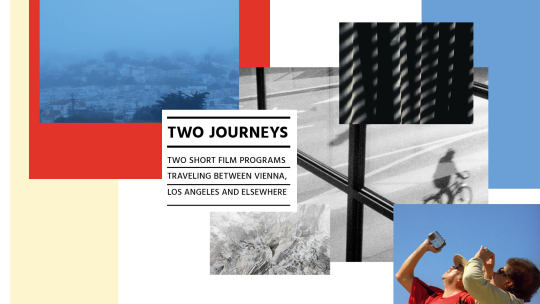
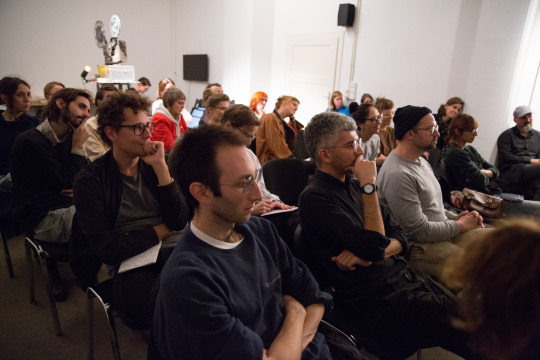
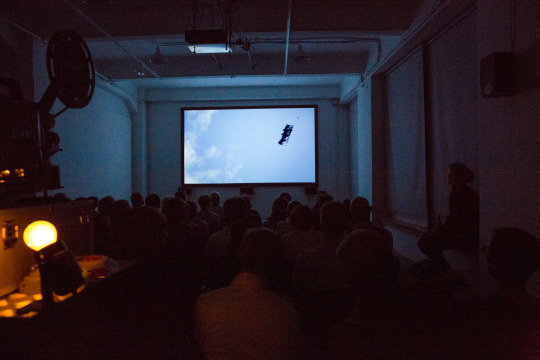

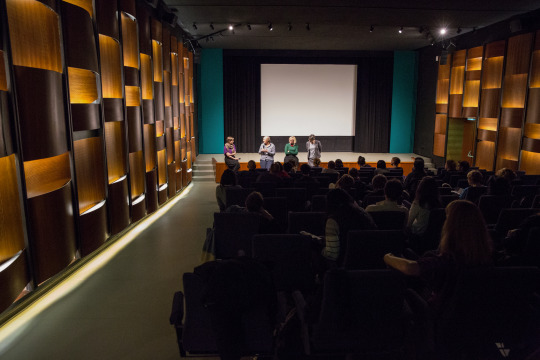
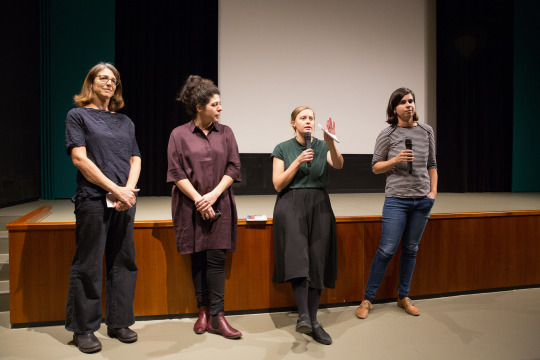

TWO JOURNEYS
TWO SHORT FILM PROGRAMS TRAVELING BETWEEN VIENNA, LOS ANGELES AND ELSEWHERE
EVENTS IN VIENNA
17.10.2019 - 18.10.2019
Two Journeys is a project by The Golden Pixel Cooperative, conceived by Viktoria Schmid and Lisa Truttmann, in collaboration with Los Angeles-based filmmakers Rebecca Baron and Nora Sweeney.Through this collective exchange, two short film programs were compiled, consisting of films that relate broadly to the two places of their creation, Vienna and Los Angeles. Austria and the United States are just starting points – we travel to a library in Buenos Aires, a ranch in rural Mexico, the sky in Switzerland, a pool in Tehran and through intangible spaces and surfaces. The films, including documentary, experimental, and narrative work, range in form, and some defy categories. The works of pioneers such as Chick Strand, Charles Burnett and Friedl vom Gröller are in dialogue with those of filmmakers from the next generation. Taking the title from Vienna to Los Angeles: Two Journeys, Esther McCoy’s collection of letters between architects residing in Los Angeles and Vienna, the Two Journeys project aims to create a cross cultural conversation through cinema.
With films by Charles Burnett, Joie Estrella Horwitz, Victoria Fu, Juan Pablo González, Friedl vom Gröller, Luis Gutiérrez Arias, Adele Horne, Rosa John, Karl-Heinz Klopf, Nathalie Koger,Laura Kraning, Claudia Larcher, Brigid McCaffrey, Dorit Margreiter, Simona Obholzer, Sasha Pirker, Marlies Pöschl, Raphael Reichl, David de Rozas, Lotte Schreiber, Chick Strand, Katharina Swoboda, John Henry Theisen and Antoinette Zwirchmayr.
EVENTS IN VIENNA
TWO JOURNEYS – Part 1
Short film program (94 min) followed by a Q&A
October 17, 2019, 7 pm
Medienwerkstatt Wien
Neubaugasse 40A, 1070 Vienna
With films by Victoria Fu, Luis Gutiérrez Arias & John Henry Theisen,Adele Horne, Karl-Heinz Klopf, Laura Kraning,Claudia Larcher, Simona Obholzer, Raphael Reichl, Chick Strand, Katharina Swoboda, und Antoinette Zwirchmayr.
TWO JOURNEYS – Part 2
Short film program (106 min) followed by a Q&A
October 18, 2019, 6:30 pm
Belvedere 21, Blickle Kino,
Arsenalstraße 1, 1030 Vienna
With films by Charles Burnett, Joie Estrella Horwitz, Juan Pablo González, Friedl vom Gröller, Rosa John, Nathalie Koger,Dorit Margreiter, Brigid McCaffrey, Sasha Pirker & Lotte Schreiber, Marlies Pöschl und David de Rozas.
FRAMEWORK PROGRAM VIENNA
Screening and talk:
Films by Nora Sweeney and Rebecca Baron
Presented by the filmmakers
October 17, 2019, 5:00 pm
Medienwerkstatt Wien
Neubaugasse 40A, 1070 Vienna
Birds of a Feather
Nora Sweeney, 19 min, 2019
Elderly Armenian men convene daily at a park in Glendale, California to play cards, backgammon, and dominoes. Laughing, singing, arguing - they transform the public space into a portal to their home countries and pass the time together as they age.
Detour de Force
Rebecca Baron, 30 min, 2015
A fascinating portrait of "thoughtographer" Ted Serios, a hard-drinking Chicago bellhop who caused a sensation in the sixties with his psychic ability to produce hundreds of Polaroid images from his mind.
Nora Sweeney is a documentary filmmaker, photographer, and professor based in Los Angeles whose work focuses on cultural traditions, labor, and immigrant communities in the United States. Born and raised in Cincinnati, Ohio, she received her B.A. from Oberlin College and M.F.A. in Film/Video from CalArts. She currently teaches film at CalArts, Long Beach City College, and Pierce College. Her films have been screened at REDCAT (Los Angeles), Antimatter (Victoria), Chicago Underground Film Festival, Milwaukee Underground Film Festival, Athens International Film + Video Festival, and in the Black Maria Film and Video Festival, where Something Like Whales won a Jury's Choice Award (1st Prize).
Rebecca Baron is a Los Angeles-based filmmaker, curator and director of the Program in Film and Video at CalArts. Best known for her lyrical essay films, she has most recently been investigating the role of AI, machine learning and database design in relation to cinematic expression. Her award-winning films have screened widely at international film festivals and media venues including Documenta 12, New York Film Festival, Rotterdam, British Film Institute, Centre Pompidou,Toronto Film Festival, London Film Festival, Viennale, and the Whitney Museum of American Art.
#TWO JORUNEYS PROGRAM FOLDER
Filmprogramm
TWO JOURNEYS – PART 1
It’s Going To Be Beautiful
Luis Gutiérrez Arias, John Henry Theisen, 9 min, 2018
Testa
Karl-Heinz Klopf, 18 min, 2018
Untitled (Flying trees)
Katharina Swoboda, 3 min, 2013
Quiero Ver
Adele Horne, 6 min, 2008
-5°C 40% rF
Simona Obholzer, 7 min, 2016–17
Devil’s Gate
Laura Kraning, 20 min, 2011
Noise above our heads
Claudia Larcher, 4 min, 2016
ttttouch me
Raphael Reichl, 3 min, 2017
Télévoix 1
Victoria Fu, 7 min, 2017
In its form asleep
Antoinette Zwirchmayr, 4 min, 2016
Artificial Paradise
Chick Strand, 13 min, 1986
––––––––––––––––––––––––––––––––––––––––––––––
Filmprogramm
TWO JOURNEYS – PART 2
Transfer (Monument Valley)
Dorit Margreiter, 3 min, 2016
Alejandro & Miguel
Joie Estrella Horwitz, 9 min, 2019
Erwin, Toni, Ilse
Friedl vom Gröller, 9 min, 1968–69
Exil
Rosa John, 3 min, 2011/16
Bad mama, who cares
Brigid McCaffrey, 12 min, 2016
Pause
Give
David de Rozas, 16 min, 2018
Exhibition Talks
Lotte Schreiber, Sasha Pirker, 9 min, 2014
What is exhibited
Nathalie Koger, 6 min, 2008–12
The Pool
Marlies Pöschl, 5 min, 2014
Las Nubes
Juan Pablo González, 20 min, 2017
When It Rains
Charles Burnett, 13 min, 1995
Supported by
Austrian-American Partnership Fund, U.S. Embassy Vienna and Bildrecht
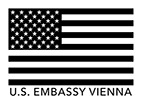

Credits
© Adele Horn, Quiero ver, film still.
© Antoinette Zwirchmayr, In its form asleep, film still.
© Lotte Schreiber & Sasha Pirker, Exhibition talks, film still.
© Claudia Larcher, Noise above our heads, film still.
© Katharina Swoboda, Untitled (Flying trees), film still.
© Brigid McCaffrey, Bad mama, who cares, film still.
© David de Rozas, Give, film still.
Event documentation: Claudia Sandoval Romero
0 notes
Text
Interview with current Filmmaker-In-Residence, Wolfgang Fischer
Wolfgang Fischer was born in Austria. He studied psychology and painting at the University of Vienna and film and video at the Düsseldorf Art Academy with Nan Hoover. In 2005, he received a scholarship to visit the “Drehbuchwerkstatt” in Munich, where he developed the screenplay for his debut film “Was Du nicht siehst.” Since 1999, he has been a director at Westdeutscher Rundfunk. He is one of the two recipients of the 2018 Erste Bank's ExtraVALUE Film Award, which he received for his film "Styx" at the 2018 Viennale.
On the occasion of his residency at Deutsches Haus at NYU, Deutsches Haus co-presents together with Anthology Film Archives and Erste Bank a screening of "Styx" (2018), on July 25, 2019, at 7:30pm, and a Q&A following the screening with the filmmaker and the co-screenwriter Ika Künzel.
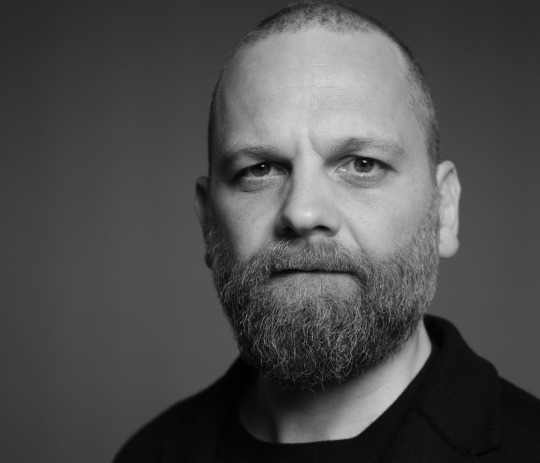
© Marc Comes
“Styx,” revolves around Rike, a 40-year-old emergency doctor from Europe, who fulfills a life-long dream to sail on her own to Ascension Island in the Atlantic Ocean. However, this dream trip takes a turn for the worse, when, after a storm, she is confronted with an overcrowded refugee ship in distress. How did you come up with this story and how did you develop the characters?
9 years ago, we read an article in the Süddeutsche Zeitung where a German skipper was thrown in the same situation as our main character, Rike. He found himself on high seas next to a refugee boat, and he was alone.
"Styx” is based on the real experiences of sailors in similar situations - we talked to them, as well as to NGOs, survivors (of journeys to Europe by boat), members of the coast guard, psychiatrists who treat traumatized people after their horrible journeys, and to government officials. Over almost seven years, we researched the strategies of the European Union’s border protection on the Atlantic Coast of West Africa, the Mediterranean and the Adriatic Sea.
"Styx” depicts a western perspective. It is clearly a film about ourselves - the members of the small white, western, self proclaimed “first“ world - and our role in a worldwide human tragedy.
Rike, the protagonist of "Styx”, is our one-to-one representative of this privileged, shielded community. She demonstrates the code of practice of her world as it is executed day by day right now. She is capable and privileged among many things; she knows the systems and codes, and it is crucial to make her the witness of this horror.
She is no heroine and no savior.
Award-winning actress Susanne Wolff, herself a blue-water sailor with an International Certificate of Competence, encapsulates the main character’s central qualities.
Her counterpart is Kingsley, a boy who is forced much too early to leave his childhood behind, and has to flee his home and challenge his luck on a dangerous journey into the unknown, like so many kids do.
Leading man, Gedion Odour Wekesa, is a schoolboy from Kibera/Nairobi. He takes acting classes as part of the ONE FINE DAY organization’s funding program, and beat 40 other boys to win the role.
What brought about the idea to tackle such difficult subject matter as migration and the European refugee crisis in a feature film? What was the process of writing the script, and was it difficult to obtain funding for this project?
Migration is a main challenge of our time.
There are more people fleeing today than there were in the 20th century as a consequence of the 2nd World War. The reasons are various and complex. It is not up to us to judge them. Sadly the current dialogue is poisoned by hysteria, xenophobia, and exploitation.
We wanted to create a communication tool to unlock empathy and solidarity. Film has the ability to do that. Therefore, we chose to make this movie.
The writing process was intense because history was always one step ahead. So many things happened during the development: the Arab Spring; the fall of Gaddafi; the wars in Syria, Iraq, and Afghanistan; ISIS becoming a global threat. Through it all, famine, plague, and violence continued to force people to leave their homes and seek shelter.
It’s a tough theme and it took us a long time to convince people to invest.
In this film you worked with refugees who had themselves made the dangerous journey across the Mediterranean. How did you go about casting them and what was your experience working together?
It goes without saying, that in order to do justice to the people who experienced the tragedy, it is vital to include them in the creative process.
In Malta, we sought out people who succeeded in the dangerous crossing.
We got in contact and interviewed them. We were astounded when they said they would like to play a part in order to tell their own stories.
It was our attempt to use a semi-documentary style.
Every character in "Styx” embodies her/his/their actual profession: The firefighters in the beginning of the movie for example are real firefighters. The soldiers on the coastguard ship are real soldiers. We wanted to tell "Styx” in an authentic way, since this is the reality of these people.
Your film not only deals with the current issue of the refugee crisis, but also with general philosophical questions (as you once put it in an interview) such as “who are we?,” “who do we want to be?,” and “who do we have to be?” How do you (attempt to) answer these questions in your own life and in your work?
Kant’s categorical imperative is a guideline for the basics of living together that “you” and “me” can become “us”. Ideally this “us” does not stop at color, race, provenance, status, religion, or sex.
About 90% of the film was shot on open water. What did this mean for you and your crew and how did you prepare for and realize this difficult feat?
We could not rely on any experiences of other directors. Nobody has shot an entire feature film on open water before. For that reason, we had to become pro’s on all levels: professional skippers defining the methods of how to shoot while sailing. The project was a real challenge for the whole crew in many aspects, psychologically and physically . Sitting 40 days on a 40 foot yacht with the core crew (10 persons maximum), there is no corner for privacy. You have no other option but to get to know each other very well.
Since its release, “Styx” has received many accolades at some of the world’s leading film festivals. Were you surprised by this overwhelmingly positive response? Has this impacted your career trajectory and perhaps also how you will approach your next project?
We were very impressed that so many people could connect with “Styx” and share their empathy! There was a big demand for discussions after the screenings. The Q&A’s often lasted up to two hours. It was not surprising. Actually, it was just additional proof that there is a need for political movies.
This was a very encouraging experience to stick to the themes of our times.
Now that you are the filmmaker-in-residence at Deutsches Haus at NYU, how do you plan on spending your time here in New York? Are there any particular things you plan to do or places you would like to see? Will you be working on a new project while you are here?
Living here is an incredible, intense experience. This feeds us.
Let’s see where it leads us.
0 notes